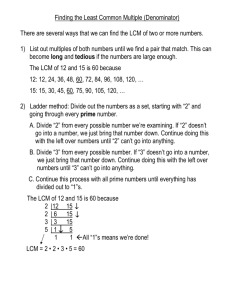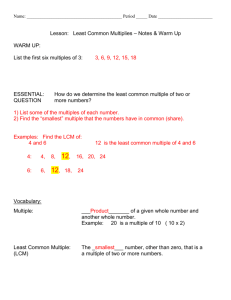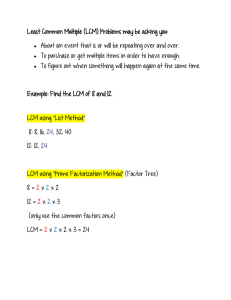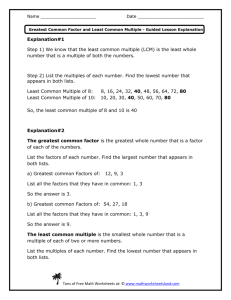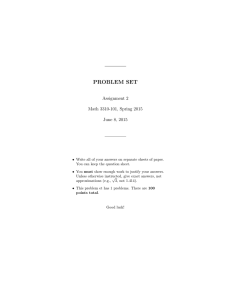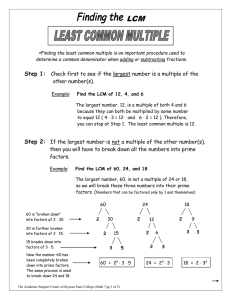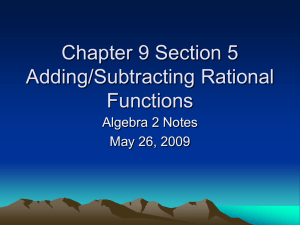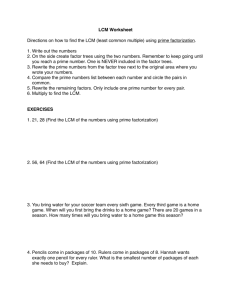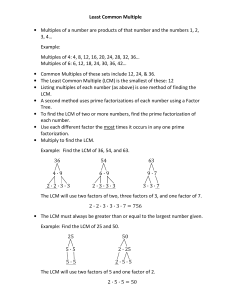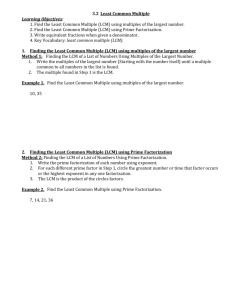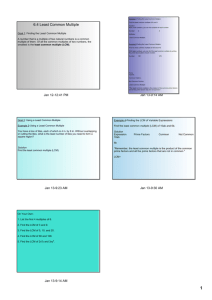5.4
advertisement
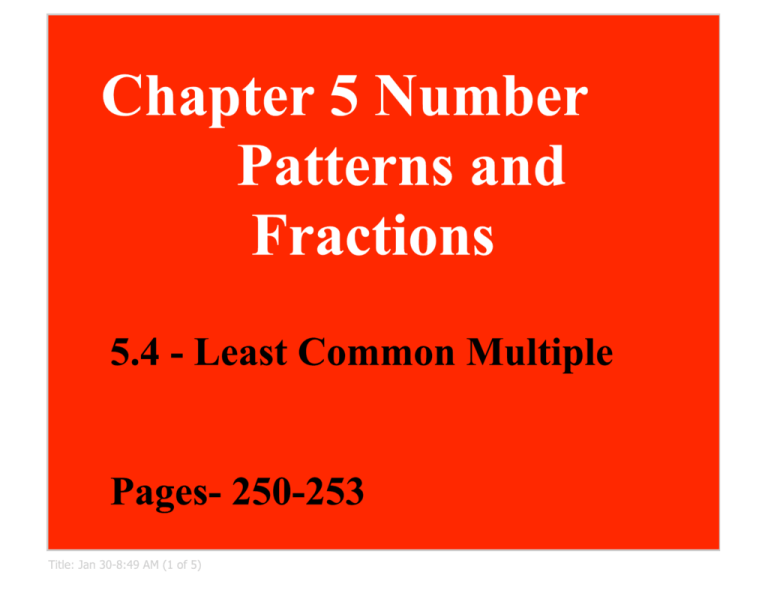
Chapter 5 Number Patterns and Fractions 5.4 - Least Common Multiple Pages- 250-253 Title: Jan 30-8:49 AM (1 of 5) NOTES:(5.4) Least Common Multiple (LCM) The LCM of two or more numbers is the smallest multiple those numbers share * Key idea p. 251 * 3 ways to find LCM: 1) List- all multiples; find the smallest multiple each of the numbers "share." 2) Prime factorization - find prime factorization of all numbers; use each prime factor the greatest number of times it is a factor of any one of the numbers 3) Table- find all factors until no more shared factors exist; multiply left column times bottom row Title: Jan 24-10:48 PM (2 of 5) Guided Practice Do # 8 & 10 like this (multiple answers) 5) 6 : 6, 12, 18, 24, 30, 36... 8 : 8, 16, 24 24 1 = 24 24 2 = 48 24 3 = 72 24 4 = 96 24, 48, 72, 96 9) 20: 20, 40, 60, 80... 30: 30, 60, 90 1 x 60 = 60 2 x 60 = 120 (too big) 60 Title: Jan 24-10:54 PM (3 of 5) Do #16 & 18 like this (List) 17) 2: 2, 4, 6, 8, 10, 12, 14, 16, 18, 20, 22, 24, 26, 28, 30... 3: 3, 6, 9, 12, 15, 18, 21, 24, 27, 30... 5: 5, 10, 15, 20, 25, 30... LCM (2 , 3 , 5 = 30) Do #20 & 22 like this (factor trees) 21) 22 36 2 x 11 6x6 2x3x2x3 2 x 2 x 3 x 3 x 11 = 36 x 11 LCM 22, 36 = 396 Title: Jan 24-11:03 PM (4 of 5) 36 x 11 36 360 396 Do # 24 & 26 like this (table) 23) 27 9 3 45 5 9 x 3 x 5 = 9 x 15 LCM (27, 45) = 135 notice: you may divide using smaller #'s and you'll still get the same answer 27 3 9 3 3 45 15 5 3 x 3 x 3 x 5 = 9 x 15 = 135 #40 = 2 pts Title: Jan 24-11:13 PM (5 of 5) 15 x 9 135
